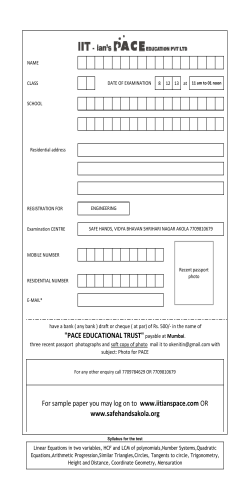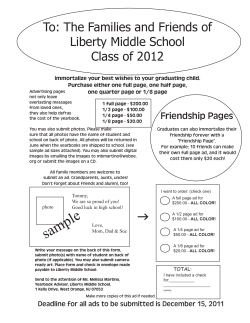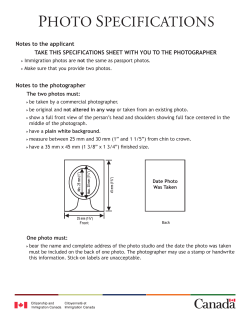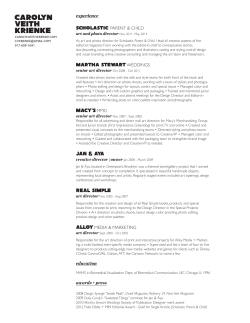
Vietnam Photo Analysis
11
Grossing Over
Flight of Retugees Across
Wrecked Bridgle in Korea
Max Desfor . Dec. 4, 1950
The photograph at left was taken
by Associated press cameraman
Max Desfor, then 37, outside
ongy ang, North Korea's
capital, during the Korean
War.When troops from China
joined the conflict on the side of
North Korea, U.S. forces hastily retreated from the area and
Py
residents seized a last chance
to escape their land before its
communist rulers reasserted their
authonry. Capruring in arresting
detail the appeal of democracies
over dicratorships, the photo was
awarded the pulitzer prize.
At a zoro ceremony in
Washington markingthe 6oth
anniversary of the conflict,
Desfor recalled the scene: ,,lI
saw] Koreans fleeingfrom the
north bank ofthe Taedong River,
crawling like ants through and
into and above and onto the
broken-down bridge; it was like
ants crawling through the gird_
ers. They had what little possessions they had strapped to their
shoulders, and on the north side
I saw thousands more lined up,
waiting to do the same thing."
What struck Desfor about tf,e
scene, he recalled, was not only
the way it looked but also the way
it sounded---or didn't sound: the
exodus. he said. t'as conducted
arnid -iea:il".- silence.',
62
Semper Fi
Reachin$ Out
Larry Burrows
'
Oct. 5, 1966
Briton Larry Burrows joined the
London off,ce of
inr944at
Lrlr
magazine
age r8, acting as an
errand boy and rising to become
a lab technician who develoPed
the photos taken bY such combat
photographers as Robert CaPa.
Inspired by their work, Burrows
begin shooting conflicts inAfrica
and the Middle East. In 196z he
arived inVietnam to cover the
divided land, and over the next
nine years, he chronicled the
struggle as it became a majorwar.
Burrows sPent a great deal
of time in the field andbecame
close with the trooPs, most often
Marines, that he PhotograPhed.
In Re aching Our, the wounded
Marine with the makeshift
bandage is Gunnery Sergeant
Jeremiah Purdie, who survived
and was sent home; it was his
third wound, qualifYing him for
discharge. Years later, Purdie's
wife told Pais Match magazine
that a print of the Photo hung in
their living room, helPing Purdie
feel connected to those Marines
who never made it home from
the war. Purdie died in zoo5.
Burrows was killedin19T
when antiaircraftfire struck the
helicopter in which he was riding
with three other PhotograPhers
in Laos. The wreckage of the
craftwas located in 1998; neat it,
strips ofcorroded film and bits
of shattered lenses were found,
alongwith remnants of a Leica
camera that was later traced to
Britain and Burrows.
79
64
Make Love, not War
. Bernie Boston .
Flower Power
Ocl.2L, L967
As the battle over the future of the divided nation ofVietnam escalated, China and
the Soviet Union supported North Vietnam's longtime anticolonialist Ho Chi Minh,
while President LyndonJohnson committed more and more U.S. troops to support
the South Vietnamese government. By late t967,morc than 45o,ooo young Americans were fighting in Southeast Asia, and the Department of Defense had begun
draftingyoung men to serve in awar that manyAmericans neither fully understood
nor supported. As antiwar protests heated up, primarily on college campuses, the
farawaywar drove a cleft through U.S. sociery already splitting along fault lines of
young and old, black and white, liberal and conseryative. "America: Love it or leave
it," declared the hawks; "Make love, notwar," replied the doves.
In a major ra\ late intg67, some loo,ooo marchers gathered at the Lincoln Memorial, and many of them proceeded to the Pentagon to protest the war. As a form
of street theater, some wielded flowers rather than weapons-creating a memorable
image of the nation's divisions forWashington Srarphotographer Bernie Boston.
8r
.e
G
I
65
Judge, lury and Executioner
Sargon Execution . Eddie Adams . Feb. 1, 196g
In one of the most famous photos of the vietnam ela, General Nyugen Ngoc Loan, chief
of South Vietnam's National Police, executes a Viet Cong soldier'at'point-lb1"nk ,arrg. on ,
Saigon streetduring the Tet offensive. The image helped tum U.S. public opinion a:way from
the nation's ally in the war, and it was awarded t*re PilitzerPizefoi spot neis photography.
After Saigon fell to the Northvietnamese ina975, Loan immigated to the u.s.,wherJhe
operated apizzaparlor outside washington, D.c., for some yeirs. He died in 1998.
fhgtgqapher Eddie Adatns came toregret this image. Writing in Trrr,rn after Loan's death,
.he said,
"The general killed the Viet Cong;1 kiled the general witih
-y ."-.r". Still photographs are the most powerfirl weapon in ihe world. People believe them; but photographs do
lie, ev_en without manipulation. They are only half-truths. what the photograph diin,i say
was, 'what would y9y do ifyou were the general in that time and place on t'hai hot day ... and
you caught the so-called bad guy after he blew away one, two or thr-ee American soldieri?' "
8z
66
War Grimes
My Lai Massacre
. Ronald Haeberle .
March 16, 1968
"Murderwill out," the saying goes, and the grisly story of the My Lai massacre,
initially suppressed by U.S. Army offrcers, eventually came to light zo months
after U.S. troops conducted a savage assault on South Vietnarnese civilians in the
hamlet of MyLai. TheAmericans believed the civilians, primarilywomen and
children,were harboring NorthVietnamese qrmpathizers. The massacre claimed
hundreds of lives; it took place in March 1968, but it was not until November ry69
that the deeds made news, with the publication of photographs taken by Army
Public Information Detachment offrcer Ronald Haeberle providing shocking
evidence of the crimes. Haeberle tookblack-and-white photos ofU.S. soldiers
per{orming interrogations and other routine actions at My Lai on an Army
camera, but he photographed the atrocities on his or,nm color camera and
eventually provided the pictures to U.S. newspapers and magazines.
83
#
:..;il
71
Gollateral Damage
The Terror of War . Nick Ut .
June
8, L972
Nine-year-old Phan Thi Kim Phuc, screaming in agony fiom napalm burns on
her body, runs toward the camera of Nick Ut, after stripping offher burning
clothes. Other members of her family are at her side; two of them died from
the bums they receivedwhen SouthVietnamese aircraft dropped napalm
bombs on their home village of Trang Bang in hopes of killing North Vietnamese troops in the area. The photo, which the London Obsewer called"the
most haunting image of the horror ofwar since Goya," won aPulitzerPize for
Hulnh Cong ("Nick") Ut, a Vietnamese photographer working for the AP.
Ut later recalled that Kim Phuc screamed "too hot, too hot" as she ran past
him. He and another photographer pouredwater from their canteens over
the girl, then drove her to a hospital and insisted doctors treat her. Kim Phuc
sunrived, aftet t7 operations. She recalled in 2ooo, "I suddenly realizedthatmy
feet had not been burned. At least I could run away. If my feet would have been
burned Iwould have died in the fire."
97
_l-.
r$E&,
77
Exit, lngloriously
Americans Evacuate Sai$on
'
Hubert van Es
'
April 29, L975
IfJoe Rosenthal's famous photo ofAmericans raising the flag at Iwo Jima in 1945 shows
the u.s. at a peak of national achievement, the photo above, taken 3o years later, captures
Fourteen years
a fiustrating, anguishing low point in u.S. military and diplomatic history.
.
of South
the
govemment
after presid?nt i.n r.dis.ntihe first U.S. military adviseisto aid
Vietnam in its war to retain its independence fiom the North, the North Vietnamese Anny
up on a
was poised to enter Saigon, and the last Americans in the South's capital queued
cause'
losing
in
the
,oof,op to make their efcape, along with local civilians who had worked
U.S.
the
top
of
the
Dutch cameraman Hubertv"r, ir', photo i3 often described as showing
this
and
the
CIA,
by
in fact, the helicoptel was pait of the Air America fleet operated
embassy;
evacuation locationwas atop an apartment building used for CIA operations in Saigon.
94
B5
The Power of One
Protester Halts Tanks in Beijing
.
Jeff Widener
.
June 5, 1989
This picture moved the world, simply by showing a man who refused to move. The scene
took place in China in 1989, as citizens rose up to demand a more democratic society. Chi
nese officials initially tolerated the movement, which began on April 15, but on the night
ofJune 4, they sent tanks into Beijing's Tiananmen Square and to other city hot spots,
killing an unknovm number of protesters, arresting many more and quelling the uprising.
OnJune 5, AP photographerJeffWidener took this photo of a lone man halting the
advance of a line of govemment tanks: it is an indelible image of an individual standing
up to the power of the state. As eyewitnesses testified, the man clambered up on the lead
tank and spoke to the soldiers inside, then resumed his position, blocking them until
bystanders pulled him out of the way. Canadian historian Timothy Brook called this
image "the most extraordinary picture of the last half of the zoth century." But when the
producer of a zoo6 PBS Frontline documentary about the incident showed the photo to
contemporary Chinese students, they told him they had never seen it before. The name of
the protester, dubbed "Tank Man," remains unknown. Butwe do knowwhat he stood for.
ao4
© Copyright 2025










